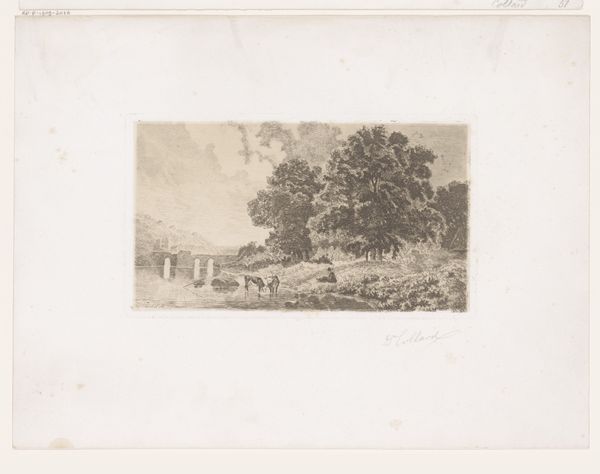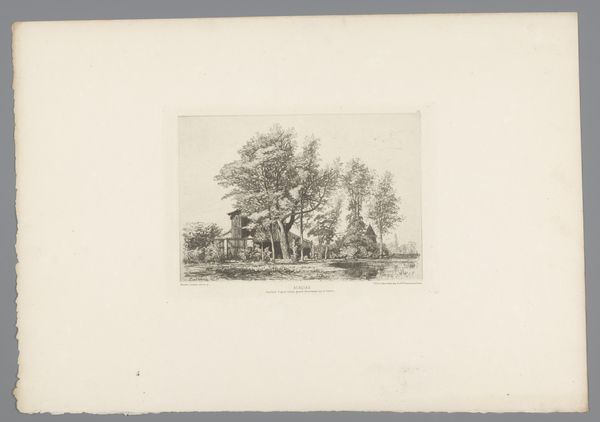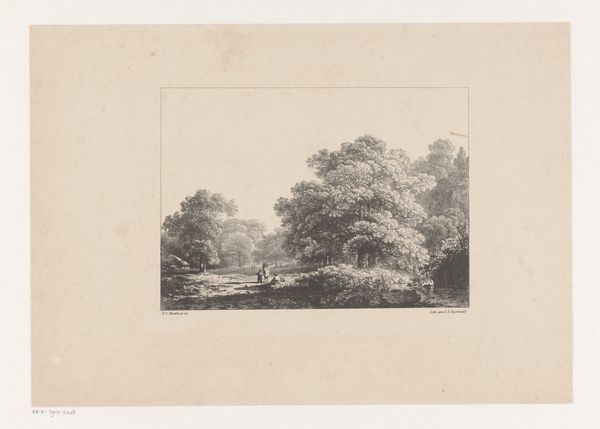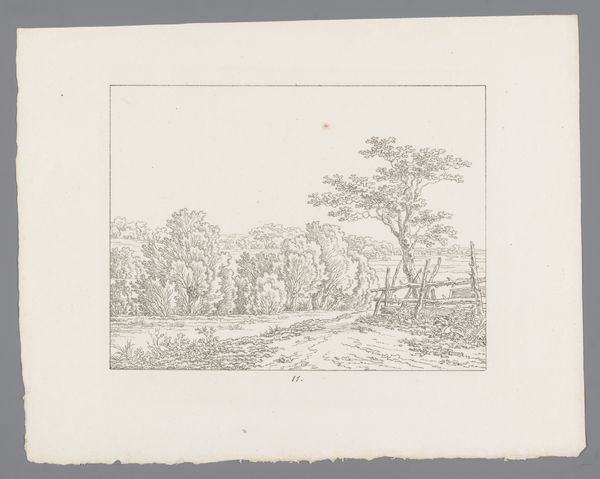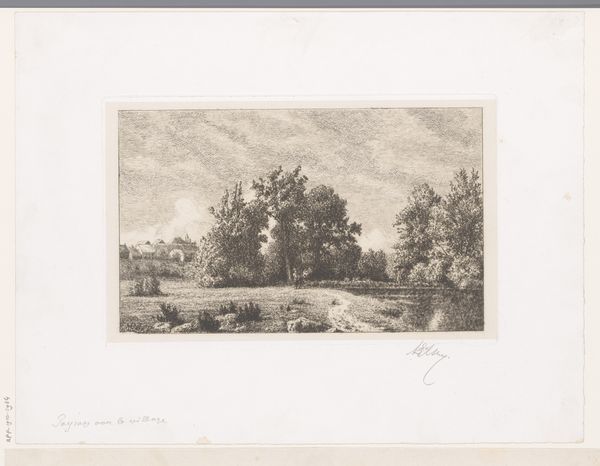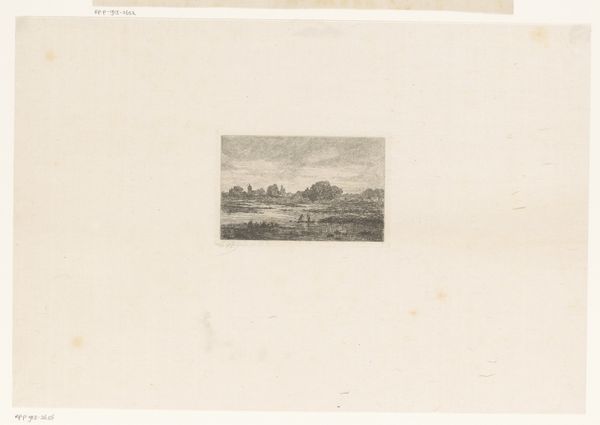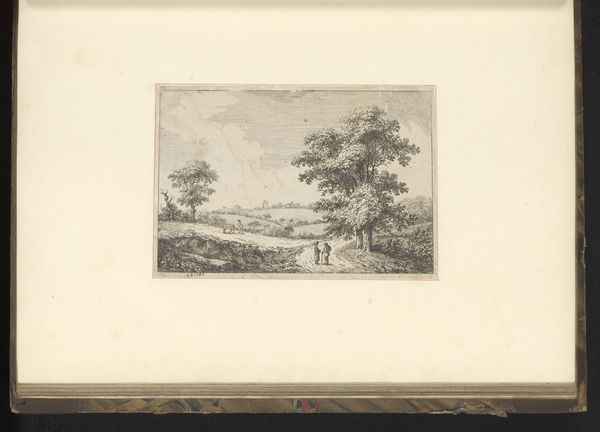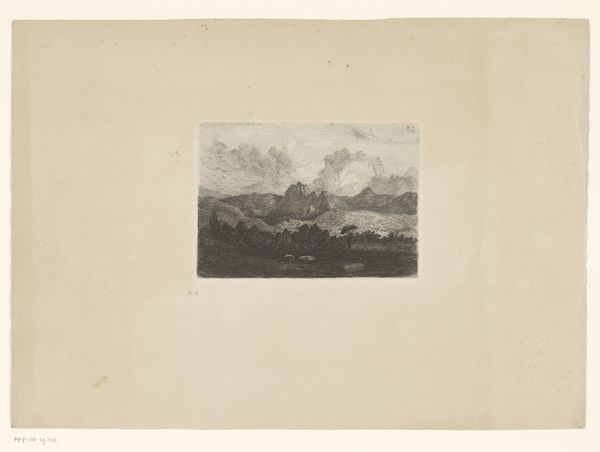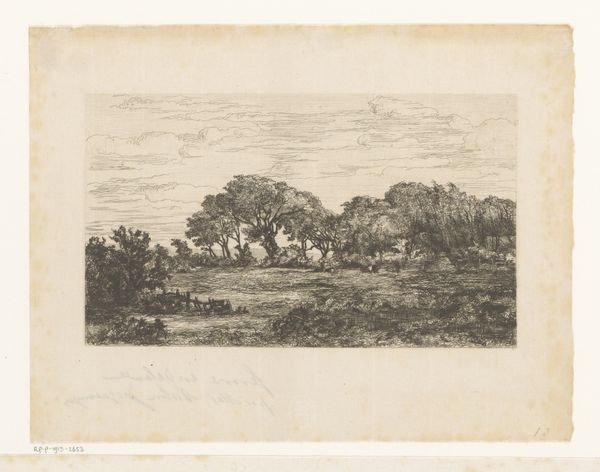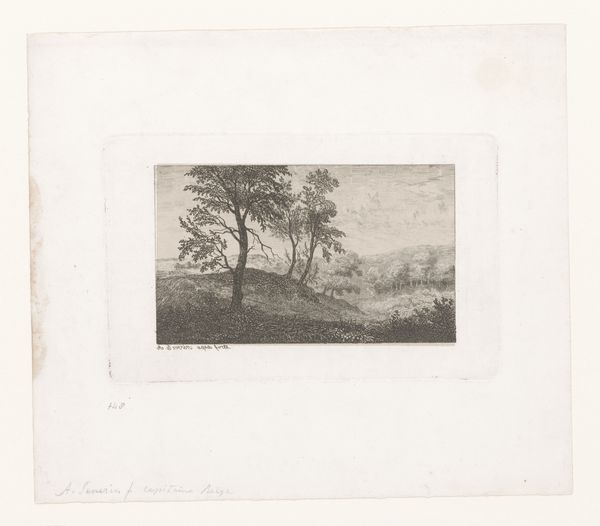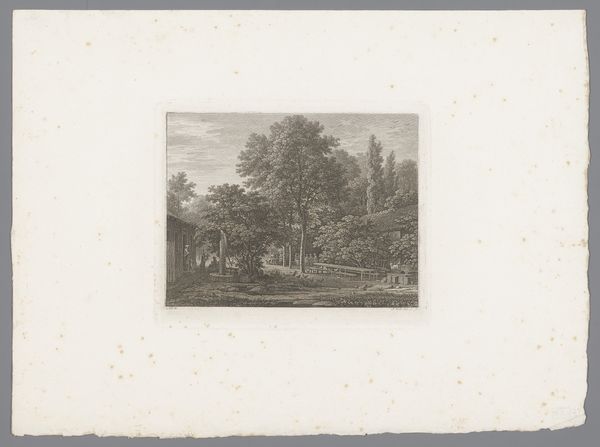
Dimensions: height 296 mm, width 444 mm
Copyright: Rijks Museum: Open Domain
Editor: This is "Weids landschap met paarden," or "Broad landscape with horses," an engraving by Adolphe Mouilleron, created sometime between 1846 and 1862. It feels incredibly still, a captured moment of serene rural life. What do you see in this piece? Curator: I see a longing for an idealized past, rendered through symbols readily understood at the time. The horses, arranged as they are, connote peace and plenty. The landscape itself isn’t just scenery; it is a reflection of national identity and pride, shaped by the romanticism prevalent then. What do the trees suggest to you? Editor: Well, they are very prominent, almost like silent guardians of the scene. They lend a sense of permanence, I think. Curator: Exactly. The trees are potent symbols of rootedness and tradition. Notice how they're placed relative to the horses and the water. These visual echoes across the image work in tandem. It almost recalls ancient pastoral scenes in tapestries, yet rendered through a modern lens. Editor: So it's not just about accurately portraying the landscape? Curator: Not at all! It’s about creating a visual language that speaks to shared cultural memories and ideals, something persistent even now, despite all the changes in the world. The artist used the visual vocabulary of the era to elicit specific feelings. It is more of a mood than an accurate rendition of space, and is why, for example, the land seems to ‘stretch out’ far beyond what would be literally depicted. Editor: That’s fascinating! I'll definitely look at landscapes differently now, searching for these hidden meanings. Curator: It's a journey of uncovering layers of visual history. The landscape remembers, as do the artist and the audience.
Comments
No comments
Be the first to comment and join the conversation on the ultimate creative platform.


